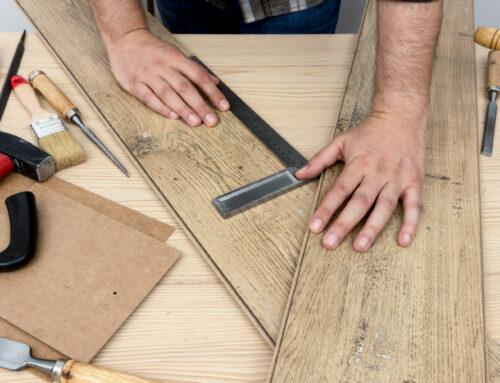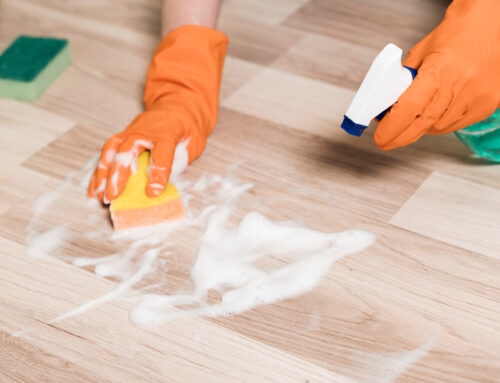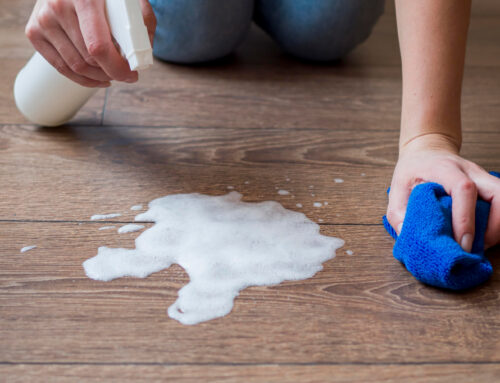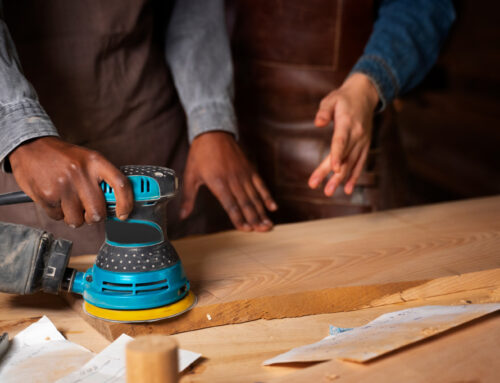Quick Guide: 10 Essential Tips To Choose the Best Flooring For a Bathroom
Below are the tips to choose the best flooring for a bathroom:
- Test True Water Resistance
Look beyond labels: Ask, “What if water sits for 24 hours?” Match materials to your bathroom type (high-moisture = porcelain/LVP). - Prioritize Slip Resistance
Check COF ratings (≥0.6 for wet zones). Textured porcelain or flamed stone > polished marble. - Balance Comfort & Temperature
Pair cold tiles with radiant heating. Use cushioned mats in standing zones. - Be Honest About Maintenance
Hate upkeep? Avoid natural stone. Prefer low-effort? Porcelain or luxury vinyl. - Calculate Total Costs
Include installation, repairs, and lifespan. Example: Premium floors often cost less annually than budget options. - Align With Home Value
Mid-range homes: Stick to durable, neutral styles. Forever homes: Prioritize personal taste. - Check Installation Demands
DIY-friendly? LVP. Complex? Porcelain/stone need pros. Factor in toilet removal costs ($150–300). - Factor In Household Needs
Kids/elderly? Opt for slip-resistant, warm surfaces. Pets? Scratch/waterproof materials. - Test Samples In Your Space
View under your lighting, wet/dry. Larger samples reveal pattern repeats. - Mix Trends + Timeless
Trendy tiles? Use small accents. Neutral floors? Pair with bold fixtures.
Why This Matters: Bathroom floors face 10,000 steps/year—choosing wrong risks safety, budget, and sanity.
Rustic Wood Floor Supply offers expert-grade solutions for every need in Atlanta, Boise, and Spokane, from waterproof LVP to heated stone. Dive deeper below to build a bathroom floor that lasts!
Standing in a flooded bathroom at 2 AM with water seeping into your bedroom because you chose the wrong flooring isn’t just inconvenient, but it’s expensive. Your perfect bathroom design crumbles beneath your feet as you realize too late that those gorgeous hardwood planks weren’t made for steam and splashes. Bathroom flooring mistakes cost homeowners billions annually in water damage repairs, according to the Insurance Information Institute.
You’ll step on your bathroom floor nearly 10,000 times each year. Every morning begins there, barefoot and vulnerable. The right choice delivers decades of comfort and protection. The wrong choice? Years of frustration, maintenance headaches, and potential health hazards from hidden mold growth.
1. Evaluate True Water Resistance (Not Just “Water-Resistant” Claims)
The most catastrophic bathroom flooring failures begin with a misunderstanding of water resistance claims. Manufacturers use terms like “water-resistant” and “waterproof” with frustrating inconsistency.
True water resistance for bathroom applications requires:
- Material that prevents water penetration to the core
- Edge treatments that block water infiltration at seams
- Stability when exposed to standing water for hours
- Resistance to warping under high humidity conditions
Reality Check Test:
Ask this specific question: “What happens if water sits on this floor for 24 hours?” Honest answers reveal true performance differences. Quality options maintain integrity while problematic ones admit to swelling, warping, or discoloration.
Some materials offer inherent water impermeability (porcelain, luxury vinyl), while others require perfect sealing to perform (natural stone, engineered hardwood). The distinction is about matching your bathroom’s moisture reality with appropriate materials.
A powder room without a shower presents dramatically different moisture challenges than a child’s bathroom with daily tub splashing. Align your selection with your specific bathroom type:
| Bathroom Type | Moisture Level | Best Material Options | Avoid |
| Primary with shower/tub | High | Porcelain, luxury vinyl, sheet vinyl | Laminate, hardwood, and most engineered wood |
| Guest with a shower | Moderate | Porcelain, ceramic, luxury vinyl, stone (sealed) | Laminate, hardwood |
| Powder room (no tub/shower) | Low | Any quality option with proper sealing | Unsealed porous materials |
| Children’s bathroom | Very High | Porcelain, luxury vinyl, sheet vinyl | Natural stone, wood products, and concrete |
2. Assess Slip Resistance For Safety
Bathroom falls send over 235,000 Americans to emergency rooms annually. The right flooring significantly reduces this risk through appropriate slip resistance, but the solution isn’t as simple as “rougher is better.”
Effective slip resistance requires balancing:
- Adequate traction when wet
- Cleanability (textured surfaces that trap dirt create new problems)
- Comfort underfoot
- Appearance preferences
The Technical Approach:
Look for flooring with a documented Coefficient of Friction (COF) rating. CNA insurance recommends a minimum COF of 0.42 for level surfaces. For bathroom applications, experts recommend:
- Dry areas: Minimum 0.42 COF
- Wet areas: Minimum 0.60 COF
These ratings appear on technical specifications, not marketing materials. Request them specifically when comparing options.
The practical balance often depends on household demographics. Bathrooms used by young children or elderly family members benefit from higher slip resistance, even at the cost of slightly more challenging cleaning. Adult-only bathrooms might prioritize aesthetics and easier maintenance.
Textured porcelain, certain luxury vinyl options, and specialized natural stone finishes (flamed or bush-hammered) offer excellent slip resistance without excessive texture. Polished marble, despite its popularity, presents significant slip hazards when wet.
3. Consider Underfoot Comfort and Temperature
The bathroom begins and ends your day. Standing on an uncomfortable floor for your morning routine or stepping onto a shockingly cold surface at night diminishes quality of life in ways most homeowners underestimate.
Comfort factors include:
- Material resilience (hardness vs “give” underfoot)
- Thermal conductivity (how quickly it draws heat from your feet)
- Surface texture against bare skin
- Acoustic properties (hollow sounds vs. solid feel)
Materials like porcelain and stone offer exceptional durability but rank poorly for comfort without supplemental solutions. Materials like cork and vinyl provide natural comfort but may compromise other performance aspects.
Practical Solutions:
Rather than sacrificing performance for comfort, consider these hybrid approaches:
- Combine porcelain with strategic heating systems (radiant heat mats cost $5-15 per square foot but transform the experience)
- Use quality bath mats in standing areas while maintaining waterproof flooring throughout
- Select warmer-toned colors that create psychological warmth even with cooler materials
- Explore textured finishes that provide both slip resistance and more comfortable foot contact
The bathroom environment creates unique comfort challenges. The same property that makes porcelain feel refreshingly cool in summer becomes a shock in winter mornings. Your climate, heating system, and personal sensitivity to temperature should influence your decision.
4. Analyze Your Real Maintenance Tolerance
The most beautiful bathroom floor becomes a daily frustration if its maintenance requirements exceed your willingness to perform them. Be brutally honest about your cleaning habits and tolerance for specific maintenance tasks.
Realistic maintenance assessment includes:
- Frequency of routine cleaning you’ll actually perform
- Willingness to use special cleaning products
- Tolerance for visible dirt between cleanings
- Acceptance of eventual patina vs. expectation of “like-new” appearance
- Time available for periodic deep cleaning
The Honest Evaluation:
Rather than aspiring to maintenance habits you’re unlikely to adopt, choose flooring aligned with your current behaviors. If you’ve never resealed a floor in your life, natural stone might be a poor choice despite its beauty.
Different materials create dramatically different maintenance realities:
- Porcelain and ceramic: Simple routine cleaning with minimal special requirements
- Luxury vinyl and sheet vinyl: Easy daily care, but vulnerable to certain chemicals
- Natural stone: Regular resealing and special cleaners required
- Engineered wood: Prompt water cleanup essential, periodic refinishing
- Concrete: Regular resealing with specific products
- Cork: Vigilant moisture protection and resealing are necessary
The maintenance reality extends beyond cleaning to long-term care. Some materials (particularly natural ones) develop character over time, a patina that some owners appreciate as richness while others view as deterioration. Your perspective on this aging process should influence your selection.
5. Set Realistic Budget Parameters (Beyond Purchase Price)
The initial purchase price provides an incomplete picture of bathroom flooring costs. The true lifetime expense includes:
- Materials cost (flooring, underlayment, transition pieces)
- Installation expenses (often exceeding material costs)
- Specialized tools or preparation requirements
- Maintenance products over the floor’s lifespan
- Expected durability (years until replacement needed)
- Potential repair costs for common damage scenarios
The Complete Cost Calculation:
To compare options fairly, calculate the annual cost of ownership by dividing the total installed cost by the realistic lifespan in your specific bathroom, then adding annual maintenance expenses.
For example:
- Option A: $8/sq ft material + $10/sq ft installation = $18/sq ft installed
- Expected lifespan: 20 years
- Annual maintenance cost: $0.15/sq ft
- True annual cost: ($18 ÷ 20) + $0.15 = $1.05/sq ft annually
- Option B: $3/sq ft material + $4/sq ft installation = $7/sq ft installed
- Expected lifespan: 8 years
- Annual maintenance cost: $0.25/sq ft
- True annual cost: ($7 ÷ 8) + $0.25 = $1.13/sq ft annually
In this example, the “premium” option actually costs less over time despite a higher initial investment.
Bathroom flooring is not a place to compromise on quality. Water damage can reach subfloors, joists, and even walls. These issues are often excluded from homeowners’ insurance if caused by poor materials.
6. Consider Your Home’s Overall Context and Value
Bathroom flooring decisions don’t exist in isolation. Your choice should consider:
- Home’s overall value and neighborhood expectations
- Consistency with other flooring throughout the house
- Potential impact on resale value
- Architectural style compatibility
- Longevity relative to your planned time in the home
The Market Reality Check:
Real estate professionals say mid-range homes with luxury bathrooms often don’t recover the full renovation cost. In contrast, entry-level homes with well-matched upgrades usually see a complete return on investment. Bathroom flooring should align with your home’s overall market position.
For investment properties, focus on durable, middle-market options with broad appeal. For your forever home, prioritize personal preferences and long-term performance. For homes you’ll sell within 5-7 years, consider current design trends and neighborhood standards.
The architectural context matters significantly. Contemporary homes support different flooring aesthetics than traditional styles. Dramatic flooring choices might enhance unique homes but limit market appeal in conventional properties.
Creating subtle connections between bathroom flooring and other home areas improves overall flow. This doesn’t require identical materials, coordinating colors, or complementary styles, and creates cohesion without forcing inappropriate materials into moisture-rich environments.
7. Evaluate Installation Requirements and Limitations
Even perfect material selections fail with improper installation. Understanding installation factors prevents expensive disappointments:
- Subfloor preparation requirements
- Acclimation needs before installation
- Specialized underlayment considerations
- Professional vs. DIY feasibility
- Bathroom downtime during installation
- Height changes affecting doors, transitions, and fixtures
The Hidden Challenge:
Bathroom floors often require removal of toilets, vanities, and sometimes tubs, adding complexity compared to other rooms. This removal and replacement significantly impacts both professional installation costs and DIY difficulty.
Different materials present dramatically different installation scenarios:
- Porcelain and stone: Requires perfectly flat, rigid subfloors; significant skill for proper installation
- Luxury vinyl: More forgiving of minor subfloor imperfections; accessible to skilled DIYers
- Sheet vinyl: Requires precise measurement and cutting, but forgiving installation
- Engineered wood: Demands careful acclimation and moisture barriers
The bathroom’s physical constraints create additional challenges. Small spaces with multiple obstacles require more material cuts and detail work, increasing both waste and labor costs. Proper waterproofing at thresholds, around toilets, and near tubs demands experienced installation.
For renovations rather than new construction, assess whether existing fixtures must be removed and replaced. Toilet removal adds $150-300 to professional installation costs, while trying to install around a toilet virtually guarantees future problems.
8. Factor In Household Demographics and Special Needs
The perfect bathroom flooring for young professionals differs dramatically from ideal options for families with young children or homes with elderly residents. Your household composition should significantly influence your selection.
Demographic-specific considerations include:
- Young children: Prioritize forgiveness for standing water, durability against toys, and cleanability
- Teenagers: Focus on stain resistance, moisture tolerance, and easy cleaning
- Elderly residents: Emphasize slip resistance, comfort underfoot, and reduced temperature shock
- Pets: Consider scratch resistance, water-bowl spill tolerance, and hair visibility
The Lifecycle Approach:
For long-term homes, consider how needs might evolve. Today’s perfect flooring for your toddler’s bathroom requires different properties than when they become teenagers. Choose options that adapt across life stages when possible.
Specific health considerations may influence decisions beyond typical factors. Individuals with allergies benefit from hard surfaces that don’t harbor allergens. Those with joint issues might prioritize surfaces with slight resilience or compatibility with cushioned underlayments.
Accessibility needs create additional requirements. Wheelchairs and walkers perform best on smooth, stable surfaces with minimal transitions. Threshold transitions between the bathroom and hallway should maintain accessibility while preventing water migration.
9. Test Samples in Your Actual Bathroom Environment
Photos, showroom displays, and even online reviews provide inadequate information about how materials will perform in your specific bathroom. Critical evaluation requires testing samples in your actual environment.
Effective sample testing includes:
- Viewing in both natural and artificial lighting conditions
- Checking morning and evening appearances (lighting changes perspective)
- Testing how the sample feels underfoot, both dry and with damp feet
- Evaluating cleaning ease with your regular products
- Assessing slip resistance when wet
- Observing how the material coordinates with existing fixtures and walls
The Reality Test:
Obtain larger samples than the typical 3×3-inch chips that showrooms provide. Most retailers offer sample checkout programs allowing temporary installation of 12×12-inch or larger pieces. These larger samples reveal pattern repetition and provide a more realistic perspective.
The bathroom’s specific lighting dramatically affects appearance. Colors that look vibrant in showroom lighting may appear dull in your bathroom’s actual conditions. Patterns that seem subtle in isolation might become overwhelming in your smaller space.
For critical evaluations, place samples directly adjacent to your bathroom’s permanent elements. These relationships often reveal compatibility issues invisible when viewing the flooring sample alone.
10. Understand Current Trends vs. Timeless Choices
Bathroom design trends evolve continually. What feels current today may appear dated within five years. This tension between contemporary appeal and timeless performance requires careful navigation.
Trend evaluation factors include:
- Timeline for your planned ownership
- Home’s architectural style
- Neighborhood and market expectations
- Personal tolerance for eventual updating
- Balance between trendy and neutral elements
The Balanced Approach:
Consider concentrating trend-driven choices in easily updated elements (wall color, accessories, fixtures) while selecting more timeless flooring. This strategy allows for refreshing the bathroom’s appearance without the expense and disruption of flooring replacement.
Current flooring trends showing potential longevity include:
- Larger format tiles (fewer grout lines)
- Subtle natural stone looks
- Geometric patterns in neutral colors
- Wood-look materials in moisture-appropriate formats
Trends with shorter expected lifespans include:
- Bold, high-contrast patterns
- Extremely dark or extremely light solid colors
- Highly distinctive shapes (hexagons, arabesques)
- Dramatic veining patterns
When evaluating design magazines and websites, note publication dates. What appears advanced in a three-year-old article likely approaches the end of its trend cycle today. Industry trade shows like CERSAIE and Coverings provide better indicators of emerging directions.
Making Your Final Decision: The Decision Matrix Approach
A structured decision process prevents overlooking critical considerations with numerous factors to balance. Create a simple evaluation matrix with these steps:
- List your non-negotiable requirements (true waterproofing, specific comfort level, maximum budget)
- Rank your priorities among the remaining factors (appearance, maintenance, longevity, etc.)
- Score each option on a 1-5 scale for each factor
- Multiply scores by priority weighting to calculate weighted totals
- Compare total scores while considering your non-negotiables
This systematic approach prevents being swayed by a single impressive feature while neglecting critical requirements. The highest-scoring option often represents the best overall balance for your specific situation.
Sample Decision Matrix:
| Factor | Weight | Porcelain (Score) | Luxury Vinyl (Score) | Natural Stone (Score) |
| Water Resistance | 5 | 5 (25) | 5 (25) | 3 (15) |
| Appearance | 4 | 5 (20) | 3 (12) | 5 (20) |
| Comfort | 3 | 2 (6) | 4 (12) | 2 (6) |
| Maintenance | 4 | 5 (20) | 4 (16) | 2 (8) |
| Durability | 5 | 5 (25) | 3 (15) | 4 (20) |
| Cost | 3 | 3 (9) | 4 (12) | 2 (6) |
| TOTALS | 105 | 92 | 75 |
In this example, despite natural stone’s superior appearance, its higher maintenance requirements and water resistance concerns result in a lower overall score for this particular situation.
A Foundation For Your Bathroom’s Success
Your bathroom floor does far more than provide a surface to stand on. It establishes the foundation for your bathroom’s functionality, safety, and aesthetic appeal for years to come. The investment deserves careful consideration beyond trending styles or initial cost. Take the time to work through these ten evaluation strategies deliberately. The result will be bathroom flooring that performs beautifully for years.
Wondering where professionals get their hardwood flooring? At Rustic Wood Floor Supply, we stock the same premium-grade wood trusted by contractors, now available to you at unbeatable prices. Whether you’re upgrading a single room or an entire home, our wide selection, expert advice, and fast shipping make the process simple. Quality floors start here.
FAQs
How To Choose The Best Flooring For Bathroom?
Prioritize waterproof materials (porcelain, luxury vinyl) with true 24-hour water resistance. Ensure slip resistance (COF ≥0.6) and underfoot comfort. Match durability to household needs (kids, pets). Calculate total costs (install + lifespan). Test samples under real conditions. Balance trends with timeless styles. Avoid wood in high-moisture areas; opt for radiant heating for cold climates.
What is the best flooring for bathrooms?
Porcelain and ceramic tiles are widely regarded as top choices for bathroom flooring due to their durability, water resistance, and ease of maintenance.
Are luxury vinyl tiles (LVT) suitable for bathrooms?
Yes, LVT is a popular option for bathrooms. It’s water-resistant, comfortable underfoot, and available in various styles, including designs that mimic wood and stone.
Is cork flooring a good choice for bathrooms?
Cork flooring is an eco-friendly option that offers comfort and warmth. However, it requires proper sealing to prevent water damage and may not be as durable as other materials in high-moisture areas.
Can epoxy flooring be used in bathrooms?
Epoxy flooring is a durable and customizable option for bathrooms. It provides a seamless surface that’s resistant to water and stains, but proper installation is crucial to ensure longevity.
Author Profile
- I have worked in hardwood flooring for the last 8 years. Use to run a company of residential crews as well as a company with gym flooring. If you need floor installation or refinishing help, I should have an answer or at least get you in the right direction.
Latest entries
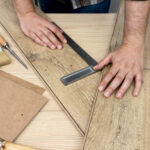 FlooringNovember 25, 2025What Engineered Hardwood Flooring Will Last Longest?
FlooringNovember 25, 2025What Engineered Hardwood Flooring Will Last Longest?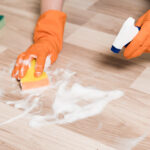 FlooringNovember 22, 2025Best Wood Floor Cleaner Liquid for Hardwood Flooring
FlooringNovember 22, 2025Best Wood Floor Cleaner Liquid for Hardwood Flooring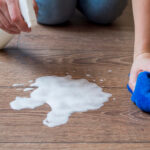 FlooringNovember 21, 2025How To Remove Adhesive From Hardwood Floors?
FlooringNovember 21, 2025How To Remove Adhesive From Hardwood Floors?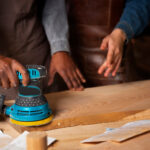 FlooringNovember 17, 2025Best Sanding Machine For Hardwood Flooring
FlooringNovember 17, 2025Best Sanding Machine For Hardwood Flooring

